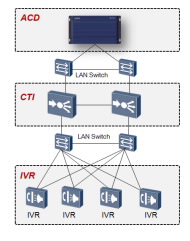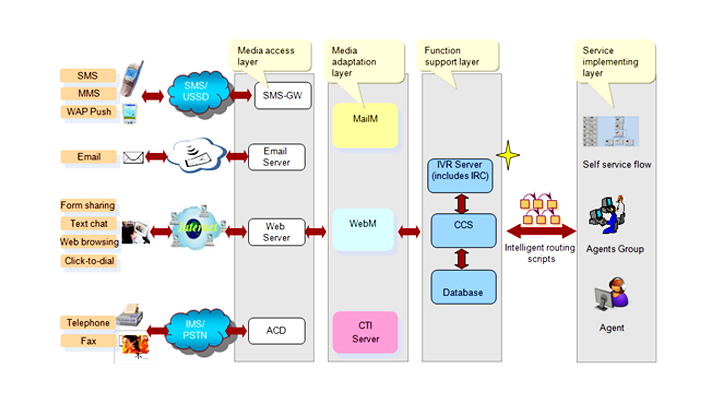Multimedia Channels
- Huawei system supports multimedia connection, including voice, video, email, fax, SNS and web. These multimedia channels can be routed uniformly.
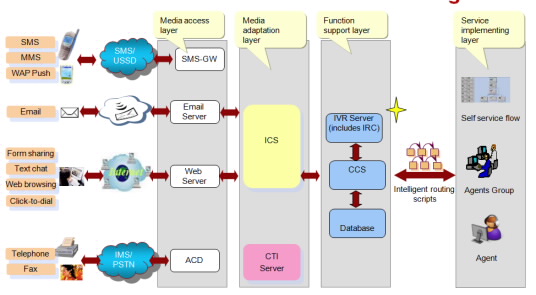
Flexible Routing
- Huawei CTI platform supports multiple routing features. Enterprise can choose most suitable routing strategy.
- Skill Based Routing: Based on pre-defined rules and the skills of the agents, callers are routed to the agent who is best suited to handle their request.
- Intelligent Routing: Intelligent routing takes into account dynamic conditions such as time of day, cost and other factors and can be defined through a customized routing script developed through a drag and drop GUI tool and based on business requirements. These scripts are executed to determine the best possible destination for a customer who has reached the contact center for services.
- Differential Routing: Every business has high value customers who need to be served with priority and through special agents. Differential routing offers businesses to classify their as different level. System will provide different level service for different level customer.
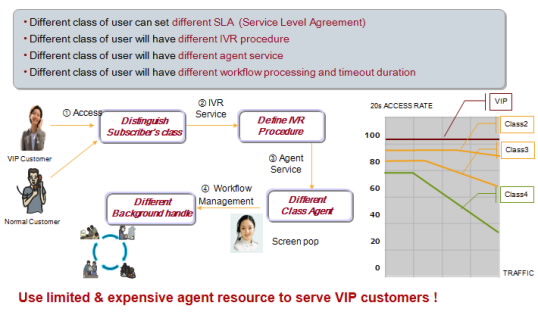
Multi-Tenanting
- Huawei CTI platform supports multi-tenanting feature through virtual contact center technology. A physical Contact Center platform can be logically separated as several virtual contact centers. Each virtual contact center has independent IVR and agent. The management tools of each virtual contact center also will be independent.

Network Contact Center
- The traditional single-node call centers are isolated from each other in the network. Calls are distributed within each single-node call center and cannot be distributed in the entire network evenly. Resources are allocated within each single-node call center and cannot be shared in the entire network. As a result, resources of a single-node call center are wasted, and the development of the call center is restrained.
- Based on the conventional call center, Huawei network call center is configured with the network routing and call transfer functions. Through these functions, Huawei network call center enables all single-point call centers on the network to share resources and balance load of calls. In this way, Huawei network call center provides an advanced network call center solution for customers.
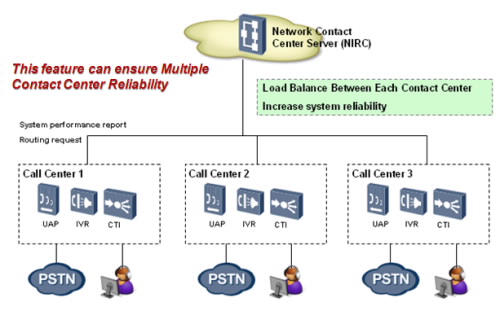
Openness & Integration
Huawei system has OBG server which is in charge of 3rd party CTI system integration. OBG server provides TSAPI standard interfaces. Except standard TSAPI features, Huawei TSAPI interface has new features, like IVR announcement, voice record, etc. Using these interfaces, 3rd party CTI system can use powerful media resource in Huawei ACD.
OBG also has done pre-integration with 3rd party CRM system. Huawei has received the certification report from Siebel CRM. Huawei will continue do integration certification with other mainstream CRM vender.

Huawei’s CTI platform is designed to seamlessly integrate with external applications and 3rd party systems through open interfaces. The CTI platform exposes multiple interfaces such as web services, ActiveX. These interfaces can also be leveraged to customize agent desktops and supervisor desktops according to business requirements.
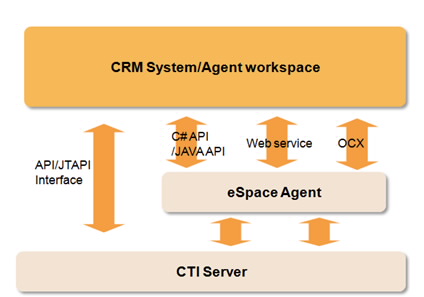
Reliability
The CTI Server is designed to work in a hot standby mode to avoid a single point of failure. The Backup CTI server is configured with at least 2 Network cards, one of which is connected to the Switch and the other is connected to the primary server. There is regular monitoring of the heartbeat between the servers and if the primary server fails, the backup server seamlessly takes over.
